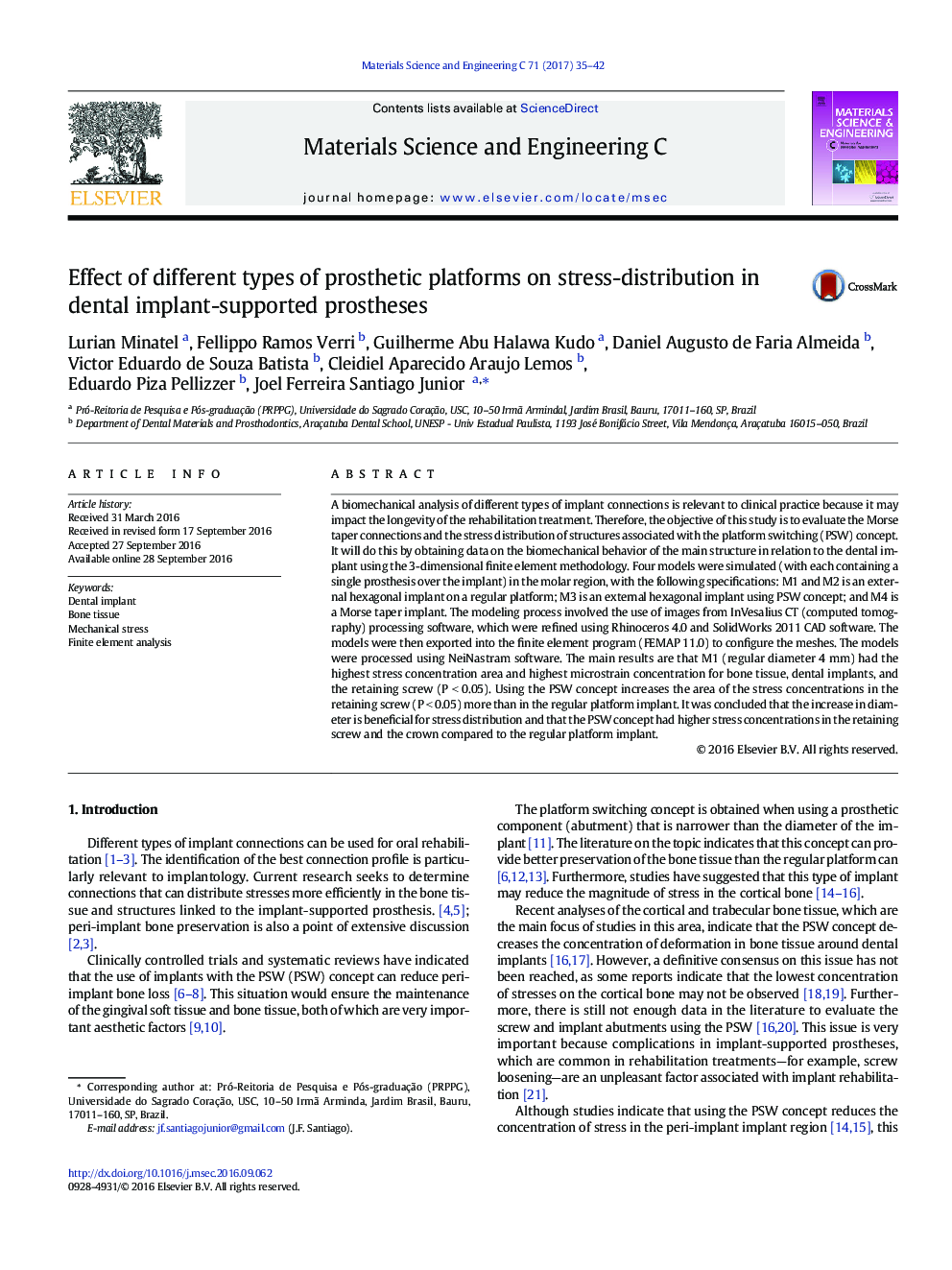| کد مقاله | کد نشریه | سال انتشار | مقاله انگلیسی | نسخه تمام متن |
|---|---|---|---|---|
| 5434603 | 1509150 | 2017 | 8 صفحه PDF | دانلود رایگان |
- The external hexagon implants was unfavorable biomechanical.
- The Morse taper implant presented the best biomechanical result.
- Platform switching concept increased stress in screw-retained prostheses.
A biomechanical analysis of different types of implant connections is relevant to clinical practice because it may impact the longevity of the rehabilitation treatment. Therefore, the objective of this study is to evaluate the Morse taper connections and the stress distribution of structures associated with the platform switching (PSW) concept. It will do this by obtaining data on the biomechanical behavior of the main structure in relation to the dental implant using the 3-dimensional finite element methodology. Four models were simulated (with each containing a single prosthesis over the implant) in the molar region, with the following specifications: M1 and M2 is an external hexagonal implant on a regular platform; M3 is an external hexagonal implant using PSW concept; and M4 is a Morse taper implant. The modeling process involved the use of images from InVesalius CT (computed tomography) processing software, which were refined using Rhinoceros 4.0 and SolidWorks 2011 CAD software. The models were then exported into the finite element program (FEMAP 11.0) to configure the meshes. The models were processed using NeiNastram software. The main results are that M1 (regular diameter 4Â mm) had the highest stress concentration area and highest microstrain concentration for bone tissue, dental implants, and the retaining screw (PÂ <Â 0.05). Using the PSW concept increases the area of the stress concentrations in the retaining screw (PÂ <Â 0.05) more than in the regular platform implant. It was concluded that the increase in diameter is beneficial for stress distribution and that the PSW concept had higher stress concentrations in the retaining screw and the crown compared to the regular platform implant.
472
Journal: Materials Science and Engineering: C - Volume 71, 1 February 2017, Pages 35-42
